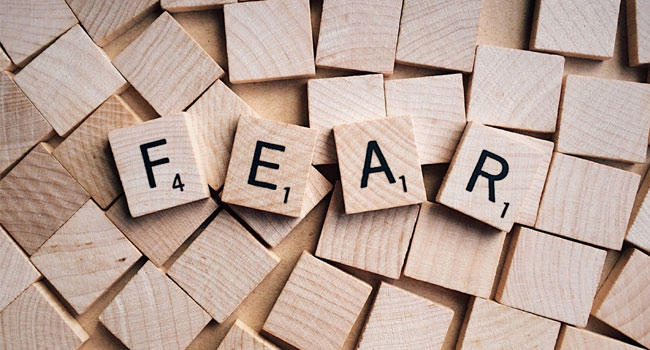Conquering Fear Improves Pain Control

The ‘Best Kept Secret’ to Understanding Your Health Risks
December 8, 2011
Overcome Your Fear and Conquer Your Pain
January 11, 2012If you or a loved one is one of the estimated 116 million Americans with chronic pain, then you appreciate what a game-changer pain can be when it comes to things like performing daily activities, functioning at work or trying to exercise. Your pain may leave you feeling boxed in, helpless and really frustrated over no longer being able to do many of the things that you have always enjoyed. When the movement of the body becomes disrupted, then the thoughts and emotions going on in the brain seem to go downhill at the same time. This can quickly lead to things like depression, anxiety and a loss of self-esteem. As you will see, for many the evil wicked stepmother in their chronic pain story is the fear created by the pain.
When we hurt, we tend to shut down physically and even emotionally. It is our natural tendency to protect a part of our body that has been injured or is uncomfortable. If our right leg hurts, then we naturally shift our weight to our left leg. This basic inherent guarded behavior pattern that we possess can be considered protective at times of acute injury. When we first sprain our ankle, staying off of it for a few weeks helps it heal.
Unfortunately, this behavior pattern loses its protective benefit once the condition lingers and/or the pain becomes more chronic. In fact, this avoidance behavior is believed by some pain experts to be a significant contributing factor to the severity of chronic musculoskeletal pain symptoms that many experience. The medical term for this is “fear-avoidance,” and it defines a thought process where an individual fears the presence or potential exacerbation of pain to the point of avoiding activities. Unlike the acute injury model, developing fear-avoidant behaviors when dealing with chronic conditions becomes maladaptive in that it increases one’s physical disability and contributes to emotional distress.
Let’s go back to the example of the sprained ankle and suppose we stay off of it, not just for a few weeks, but rather for six months. In this scenario, avoiding using the injured body part becomes harmful as opposed to helpful with the healing process. Staying off of the injured leg for a prolonged period of time can lead to all kinds of physical changes including a stiffening of the joints, muscle atrophy throughout the whole limb, and scar tissue buildup. Physical changes will start to occur throughout the rest of the body, as well, which will cause problems like postural changes and overuse of other parts like the uninjured leg. Once we become fearful of reengaging our bodies after it is in pain or has been injured, then this avoidance behavior gradually leads to changes that ultimately leave us much more disabled and sadly in even more pain.
Inactivity and avoidance should be considered painful behavior traits. In the example above where we stop using one of our legs for six months, you can imagine that the leg will hurt more and more as it gets weaker and stiffer, and the longer we wait, the more it will hurt when we try to use it. If we continue to overuse our good leg, then it will also start to hurt from the excessive pressure exerted on it. In my experience, disrupted gait patterns eventually lead to lower back pain, too. Now, if we add assistive devices like canes or crutches, then we run the risk of straining our hands, arms and shoulders, too. Before you know it, we are practically hurting all over it. At my center we use a special test, the Tampa Scale for Kinesiophobia, to quantify levels of fear avoidance in patients both before and after treatment.
Overcoming fear-avoidance is tricky business, but an important part of winning the battle against pain. Our pain changes the way we think, and makes it difficult for us to recognize when we have developed irrational fears or behavior patterns that stand in the way of getting better and feeling better. Most folks need some help in seeing past the pain to start believing that moving something that hurts will eventually help make it stronger and less painful. For some, working with experts in movement like high-quality physical therapists, Pilates instructors or trainers, for example, can help get the ball rolling. In other cases, learning tools to better manage anxiety and fear through special techniques like relaxation training and breathing exercises can have a big impact.
Achieving just small but steady gains over time can eventually lead to larger triumphs and personal transformations. One component of overcoming chronic pain can mean working through some serious fears and misconceptions, but the rewards make it so worth it.


